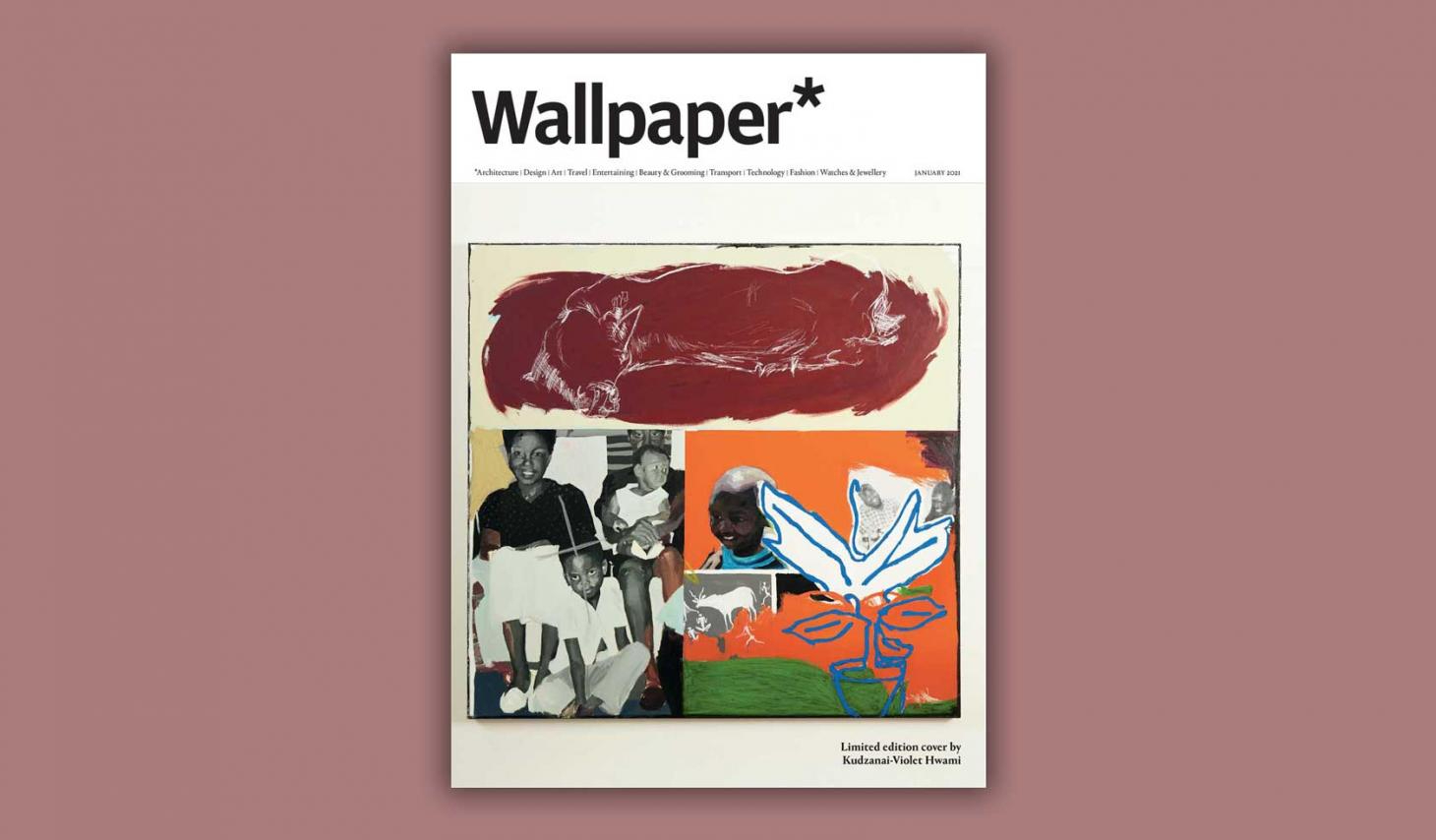Kudzanai-Violet Hwami’s modern-pop portraits frame gender, sexuality and race
The Zimbabwean-born artist, who explores identity through vivid cartoon-inspired collages, headlines our January 2021 Next Generation issue. Writer Amah-Rose Abrams interviewed Hwami ahead of today's announcement that she has joined the roster of Victoria Miro Gallery
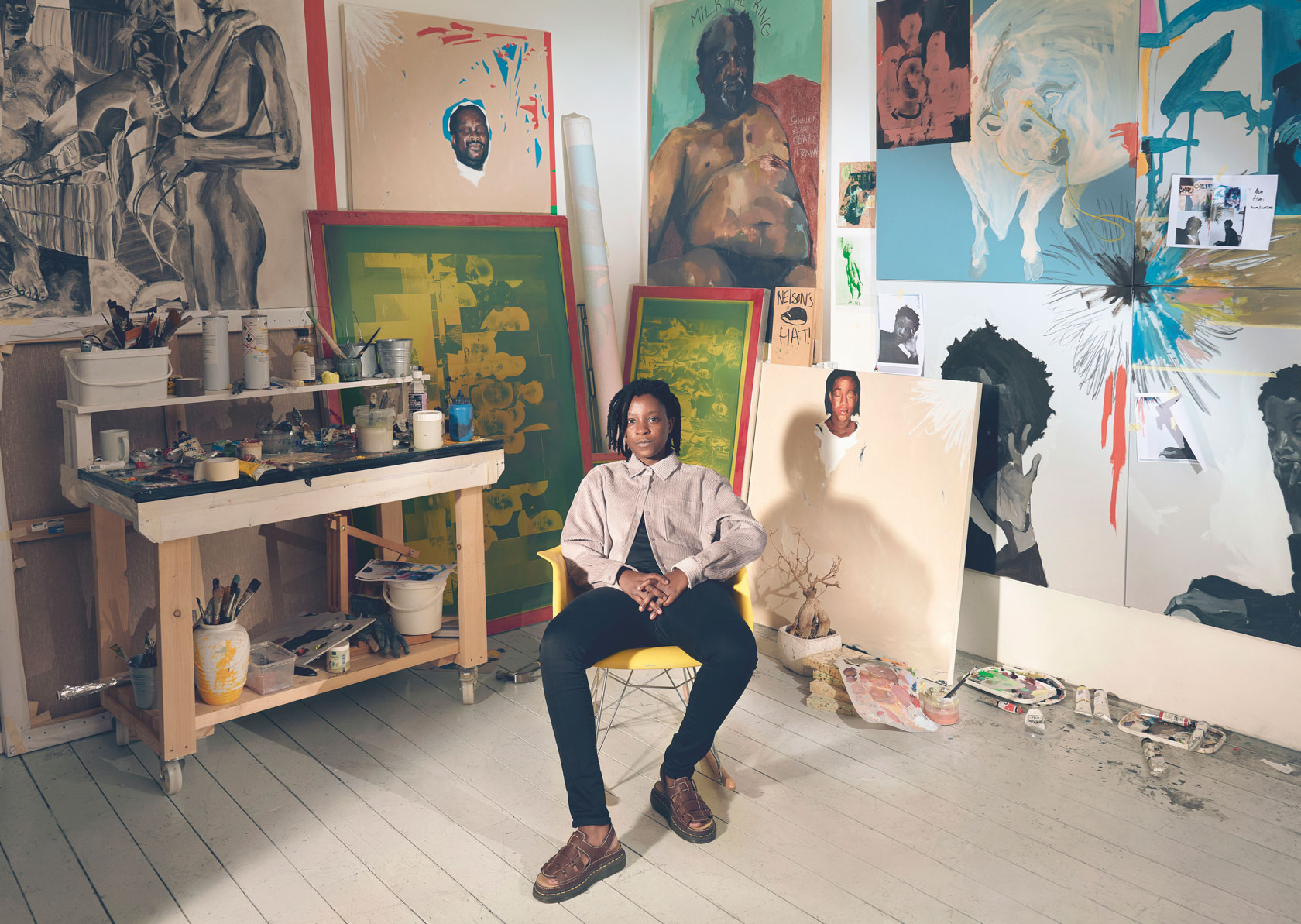
Catherine Hyland - Photography
Kudzanai-Violet Hwami creates collages that consume the figures within them in colour and painterly forms. Her paintings are pieced together with precision, but there is something unorthodox about them: the figures are self-contained, sometimes confrontational, but never self-conscious. Many artists are exploring the meaning of the Black body in art, and rightly so. But with Hwami, the imagined worlds that hold those bodies – incorporating blocks of colour, plants or even a superhero’s cape – are what strike you first.
Still just 27 years old, Hwami represented Zimbabwe at the Venice Biennale in 2019. Born in Zimbabwe in 1993, she moved to neighbouring South Africa when she was nine, then to Manchester in the UK when she was 17. Her solo show, ‘Kudzanai-Violet Hwami: (15,952km) via Trans-Sahara Hwy N1’, commissioned by London’s Gasworks in 2019, was well-received, and she finishes her master’s in fine arts at Oxford University’s Ruskin School of Art next summer. When she arrived in Manchester, she chose to study for a BTec national diploma in art and design at North Manchester College. ‘I liked the freedom that I had. I had a choice and what I really wanted to do was draw,’ she recalls.
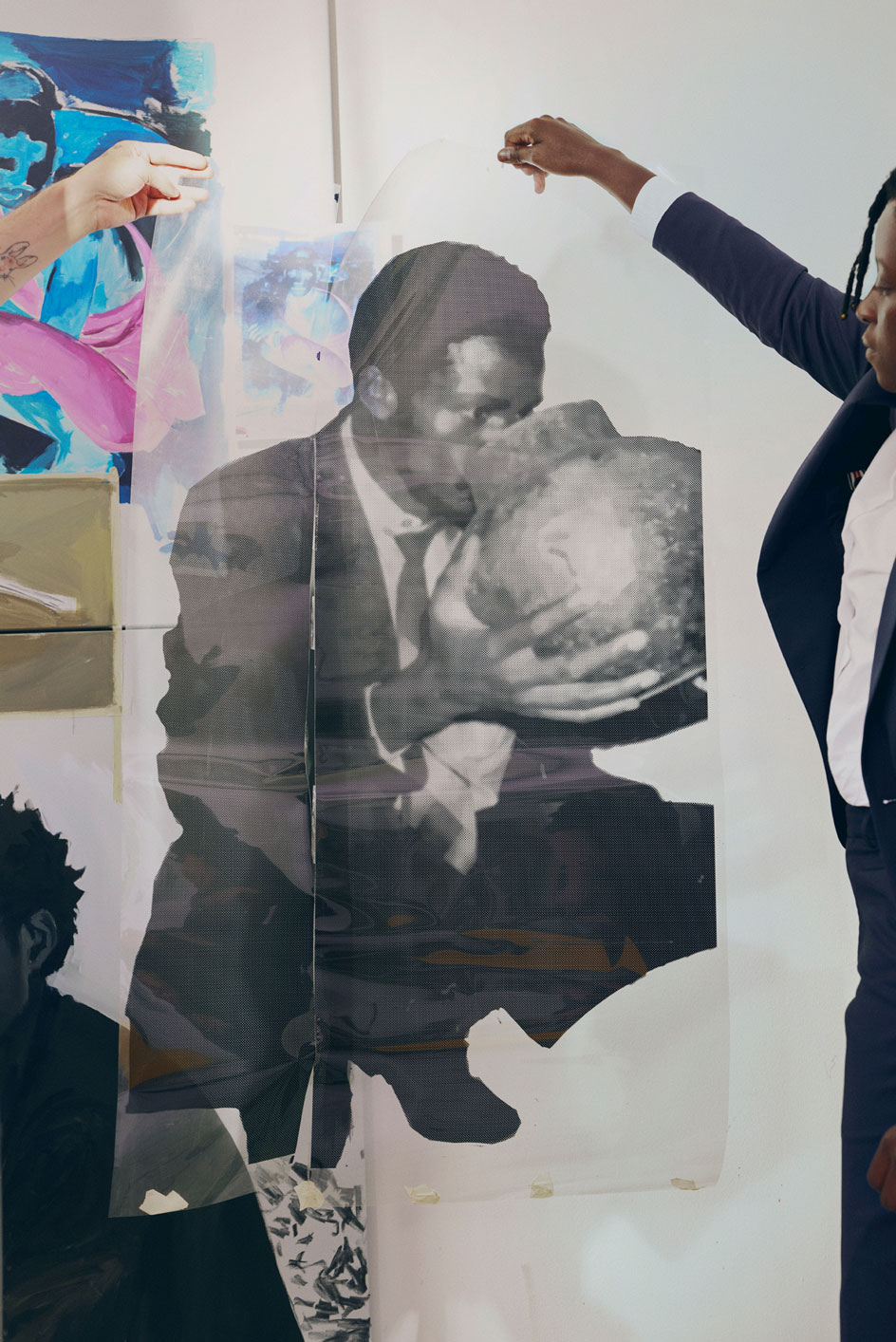
Hwami holds a transparency print, used for screen printing, of Bira, which formed part of a solo exhibition shown at London’s Gasworks in 2019
Hwami always drew. Inspiration came from Cartoon Network. She loved the otherworldliness of manga and would perpetually draw versions of her favourite programmes. ‘I would probably have gone into animation had I not been on that course. I met this tutor, an amazing guy who at the time was my mentor, and he encouraged me to paint, and I think that’s where the journey began,’ she says. ‘That’s why I took it seriously.’
Recognition came quickly. She held her first solo exhibition, at Marylebone’s Tyburn Gallery, soon after graduating from Wimbledon College with a BA in fine arts in 2016. ‘I was just going with the flow and really grateful that people were reacting to the work the way that they were,’ she explains. ‘I am working as a professional now and just trying to figure out what the path is.’
Like many young artists, Hwami currently represents herself, out of both fate and choice. The Tyburn Gallery, which Hwami praises as having given her the best possible experience, folded in June 2019. Then as the pandemic hit, there was little choice but to sit things out and finish her master’s.
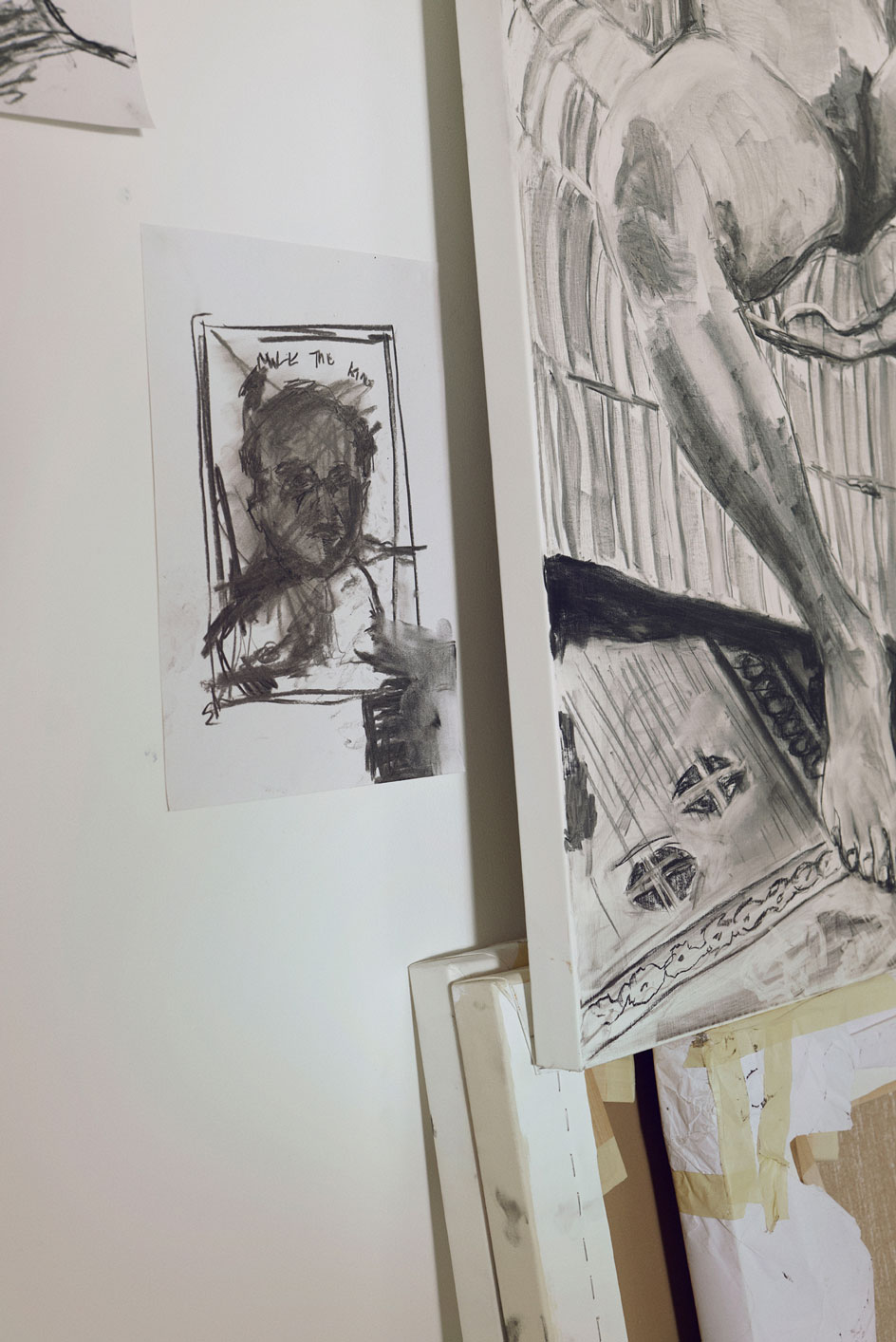
Above and below: sketches, works in progress and completed works in Hwami’s London studio
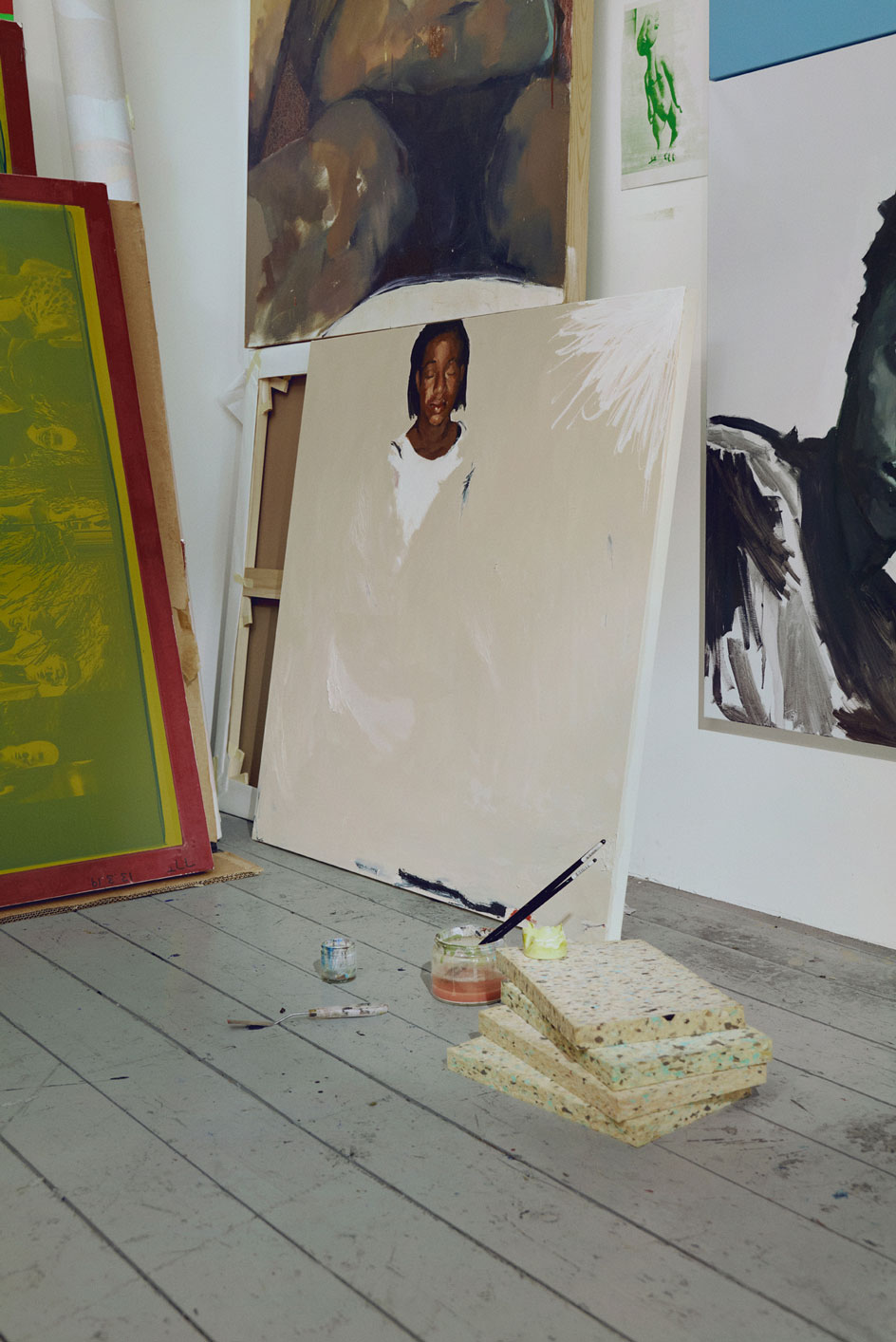
Above and below: sketches, works in progress and completed works in Hwami’s London studio
‘It gave me an opportunity to slow down and think about who I’m making this work for and why, to give myself a chance to create in my own time without the need to share.’ Hwami is a self-proclaimed loner and comes across as a deep thinker. Her process as an artist is meticulously planned and considered, starting with collaging images and creating the structure of a painting around them. It’s a creative approach she picked up observing and collating images on Tumblr, both creatively and in an effort to get to grips with her identity. ‘I spent a lot of time on the internet as a pre-teen and, in that socially awkward stage of my life, I found it more comfortable to escape and exist in cyberspace,’ she explains. ‘I started exploring sexuality and gender identity. I was obsessed with the idea of physically living in a different body. All my frustration and confusion was expressed through studying the queer body.’
RELATED STORY
It’s a strange thing that when a Black painting exits the studio, it’s immediately politicised and the self-enquiry that took place when it was being created is muted
As a person of colour with a public role, it’s difficult not to have a de facto position on identity, but it doesn’t mean that position isn’t subject to change. ‘It’s a loaded topic and there is nothing wrong with investigating identity. It’s the expectation to expose oneself that strips you from your individuality, and that is what I’m mostly concerned about. It’s a strange thing that when a Black painting exits the studio, it’s immediately politicised and the self-enquiry that took place when it was being created is muted,’ Hwami says. She has created works inspired by pieces of writing, life online and old photographs. She listens to recordings of spiritual guru Alan Watts and is interested in ideas of Black individualism. She’s looking for something and is comfortable in the knowledge that she is yet to find it.
Hwami’s paintings are figurative, colourful and laced with unexpected visual references. Carefully crafted before she even lifts a brush, her paintings fuse aesthetics from all the places she has lived, from Zimbabwe to London, with an occasional nod to the graphic cartoon aesthetic she grew up loving. You can see the influence of these animations in the movement in these paintings. Even as the figures are static, the compositions they sit within are not.
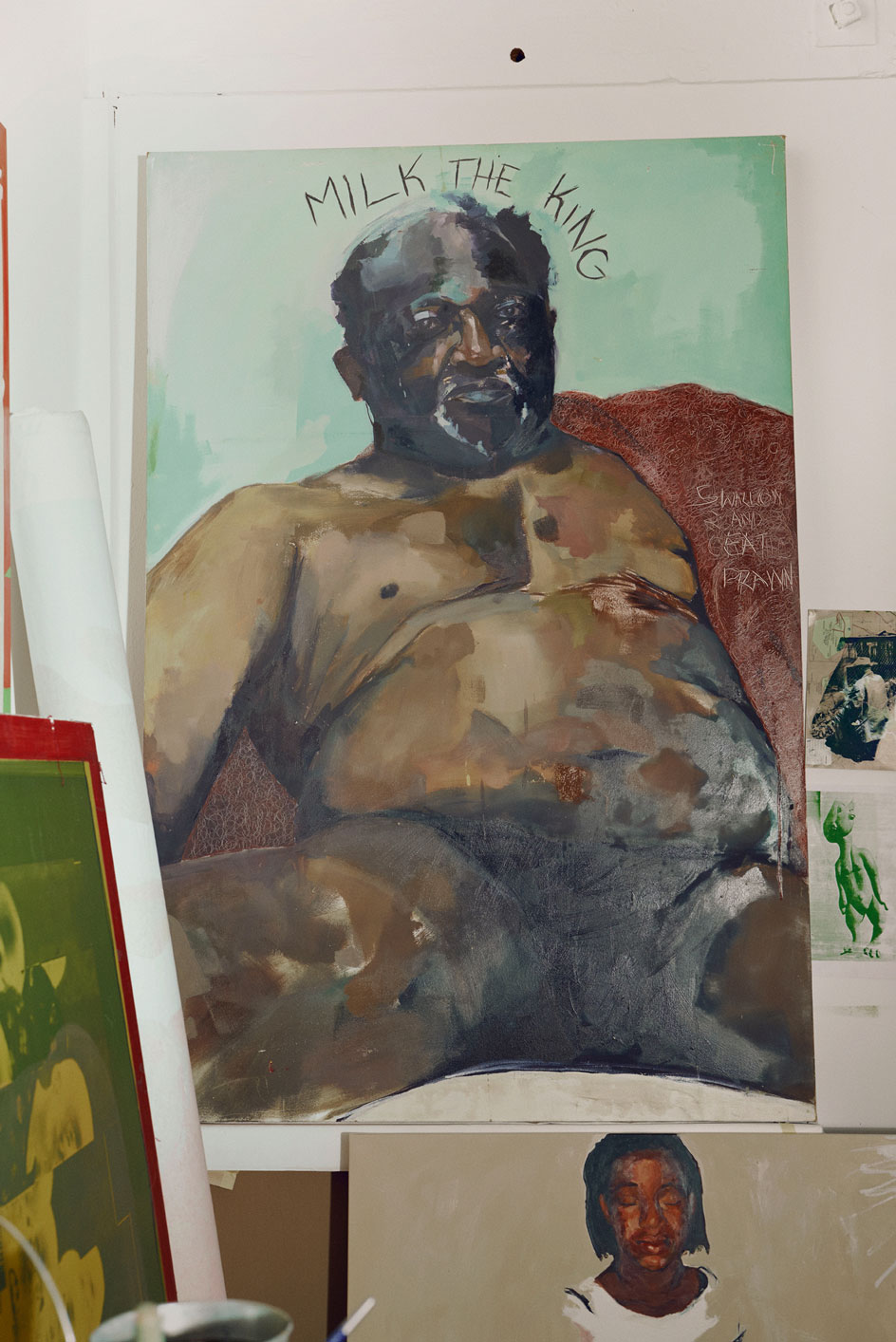
Milk the King, 2014, painted when the artist was 21
Despite her shows being postponed in 2020, Hwami still landed a spot in the first Africa-focused ‘40 Under 40’ list produced by global art magazine Apollo. It took her by surprise. ‘That was something phenomenal. I’m super excited. I wasn’t expecting it because you just don’t know who’s watching. It seems like people are watching, though,’ she says.
June will be a big month for Hwami, as she will graduate from the Ruskin with a final show that coincides with a group show at the Centre Pompidou. This seems in keeping with an artist that, in her short career, has already reached dizzying heights while managing to keep her feet firmly on the ground.
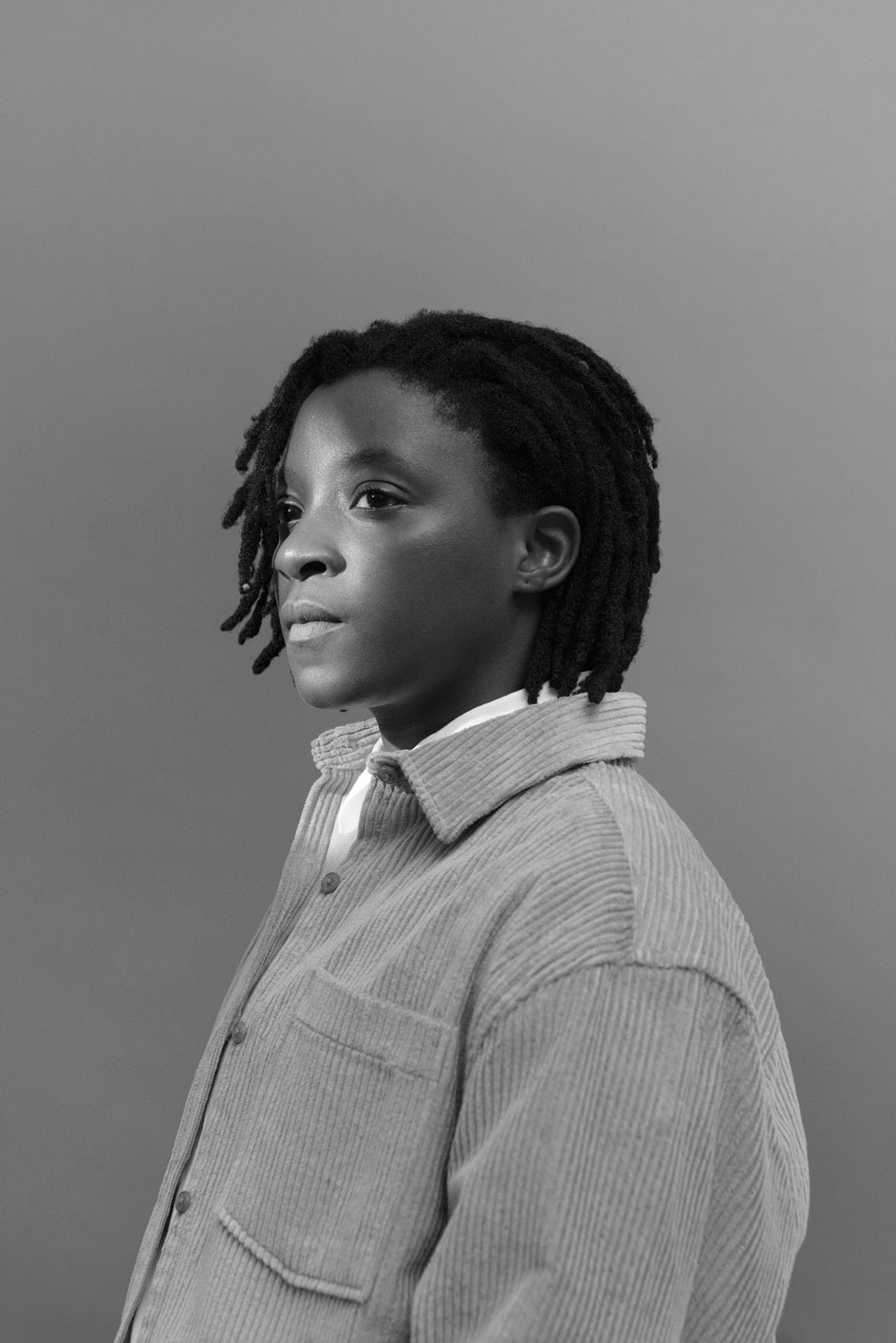
Portrait of Kudzanai-Violet Hwami in her London studio
INFORMATION
kudzanaiviolethwami.com; @mwana.wevhu
Kudzanai-Violet Hwami’s first exhibition with Victoria Miro will be held in summer 2021. victoria-miro.com
Wallpaper* Newsletter
Receive our daily digest of inspiration, escapism and design stories from around the world direct to your inbox.
Amah-Rose Abrams is a British writer, editor and broadcaster covering arts and culture based in London. In her decade plus career she has covered and broken arts stories all over the world and has interviewed artists including Marina Abramovic, Nan Goldin, Ai Weiwei, Lubaina Himid and Herzog & de Meuron. She has also worked in content strategy and production.
-
 Put these emerging artists on your radar
Put these emerging artists on your radarThis crop of six new talents is poised to shake up the art world. Get to know them now
By Tianna Williams
-
 Dining at Pyrá feels like a Mediterranean kiss on both cheeks
Dining at Pyrá feels like a Mediterranean kiss on both cheeksDesigned by House of Dré, this Lonsdale Road addition dishes up an enticing fusion of Greek and Spanish cooking
By Sofia de la Cruz
-
 Creased, crumpled: S/S 2025 menswear is about clothes that have ‘lived a life’
Creased, crumpled: S/S 2025 menswear is about clothes that have ‘lived a life’The S/S 2025 menswear collections see designers embrace the creased and the crumpled, conjuring a mood of laidback languor that ran through the season – captured here by photographer Steve Harnacke and stylist Nicola Neri for Wallpaper*
By Jack Moss
-
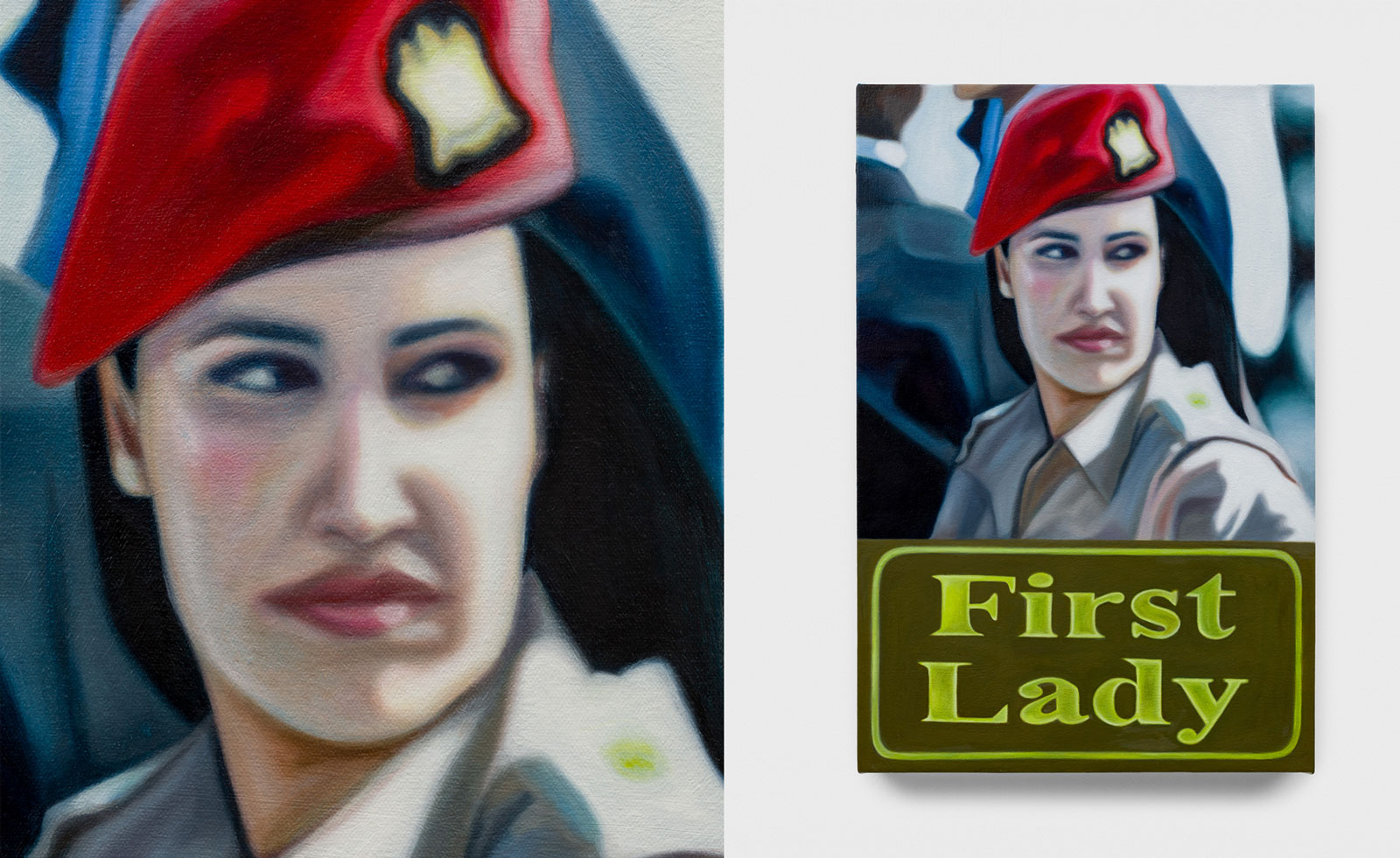 Tasneem Sarkez's heady mix of kitsch, Arabic and Americana hits London
Tasneem Sarkez's heady mix of kitsch, Arabic and Americana hits LondonArtist Tasneem Sarkez draws on an eclectic range of references for her debut solo show, 'White-Knuckle' at Rose Easton
By Zoe Whitfield
-
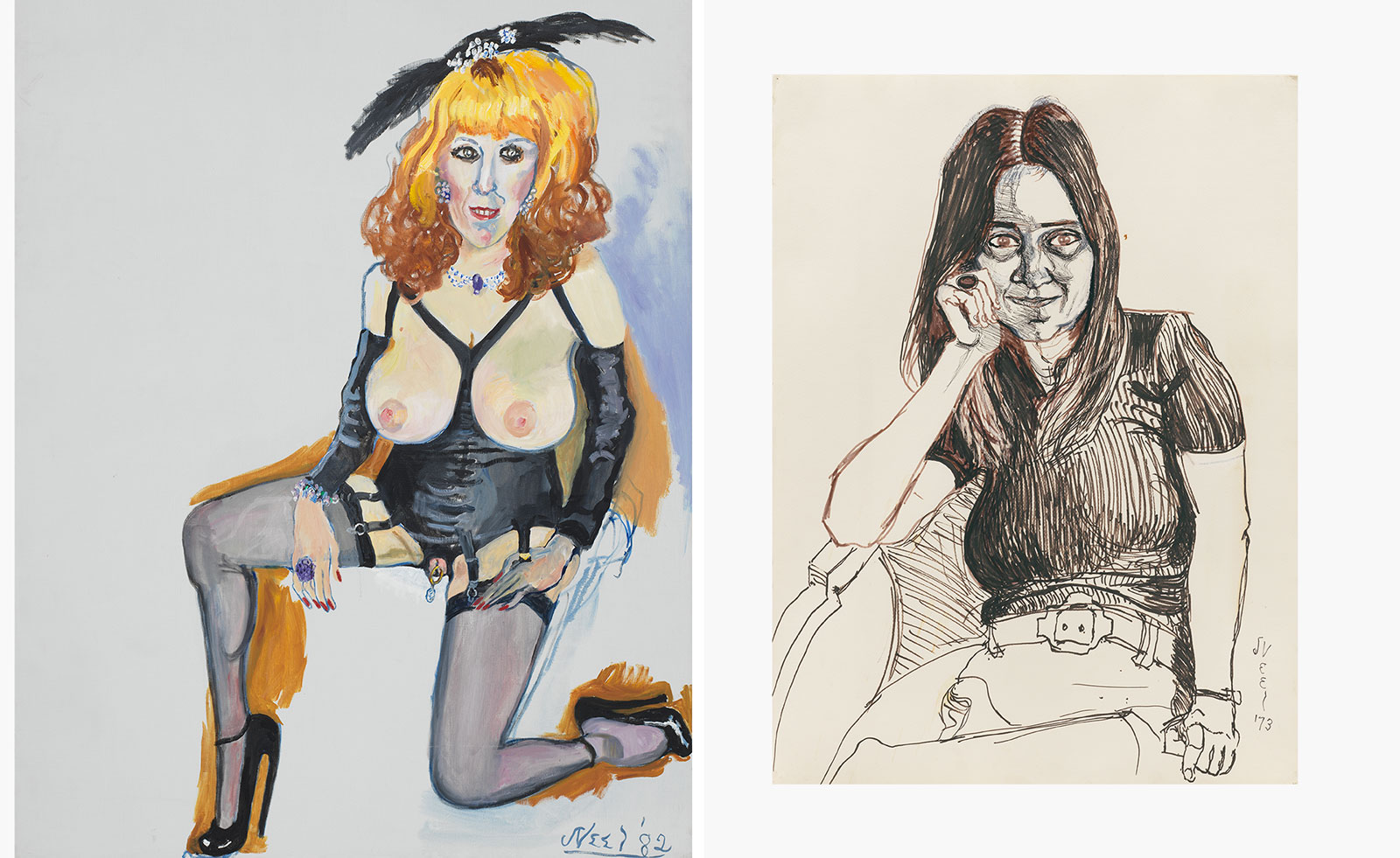 Alice Neel’s portraits celebrating the queer world are exhibited in London
Alice Neel’s portraits celebrating the queer world are exhibited in London‘At Home: Alice Neel in the Queer World’, curated by Hilton Als, opens at Victoria Miro, London
By Hannah Silver
-
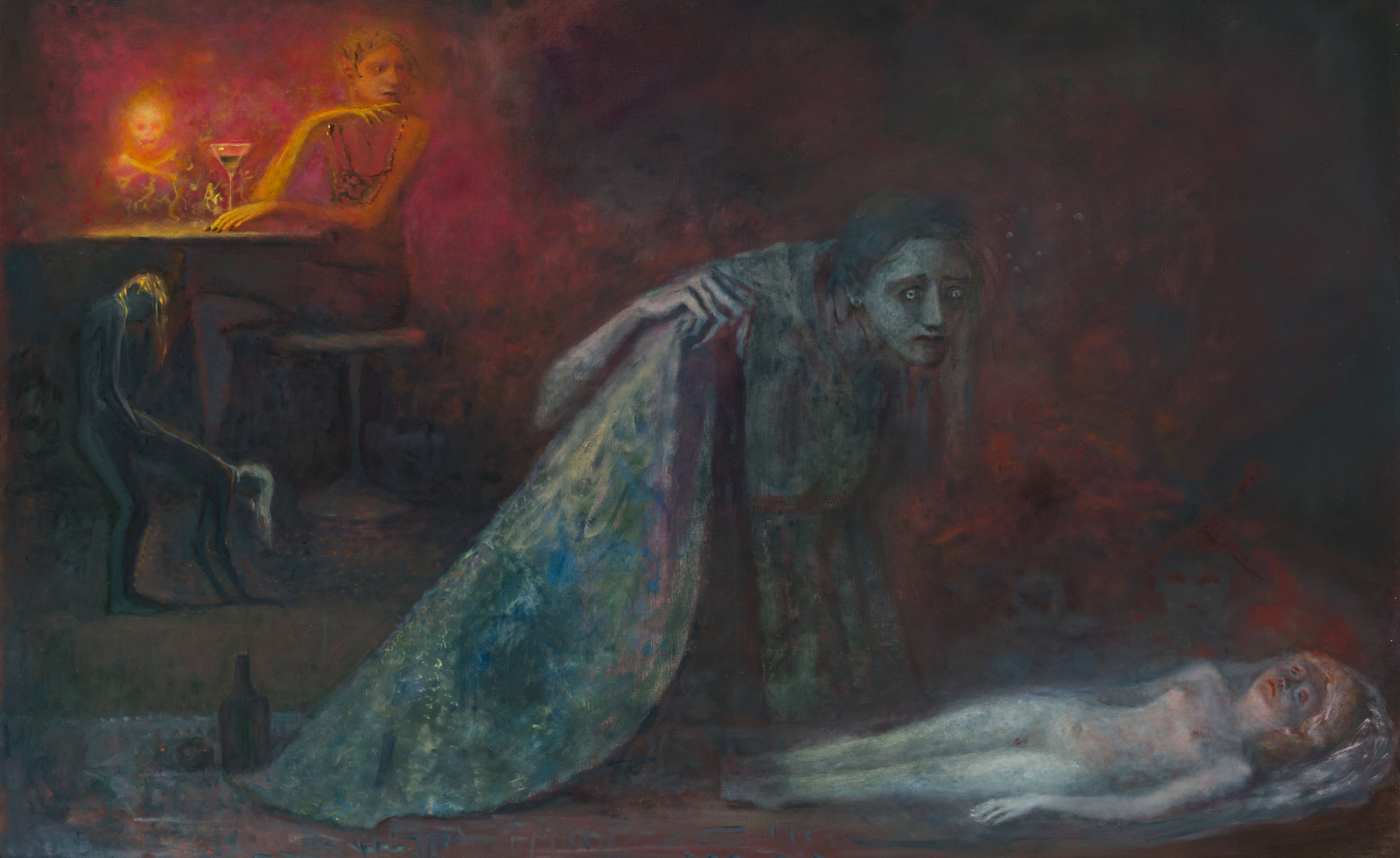 ‘You have to face death to feel alive’: Dark fairytales come to life in London exhibition
‘You have to face death to feel alive’: Dark fairytales come to life in London exhibitionDaniel Malarkey, the curator of ‘Last Night I Dreamt of Manderley’ at London’s Alison Jacques gallery, celebrates the fantastical
By Phin Jennings
-
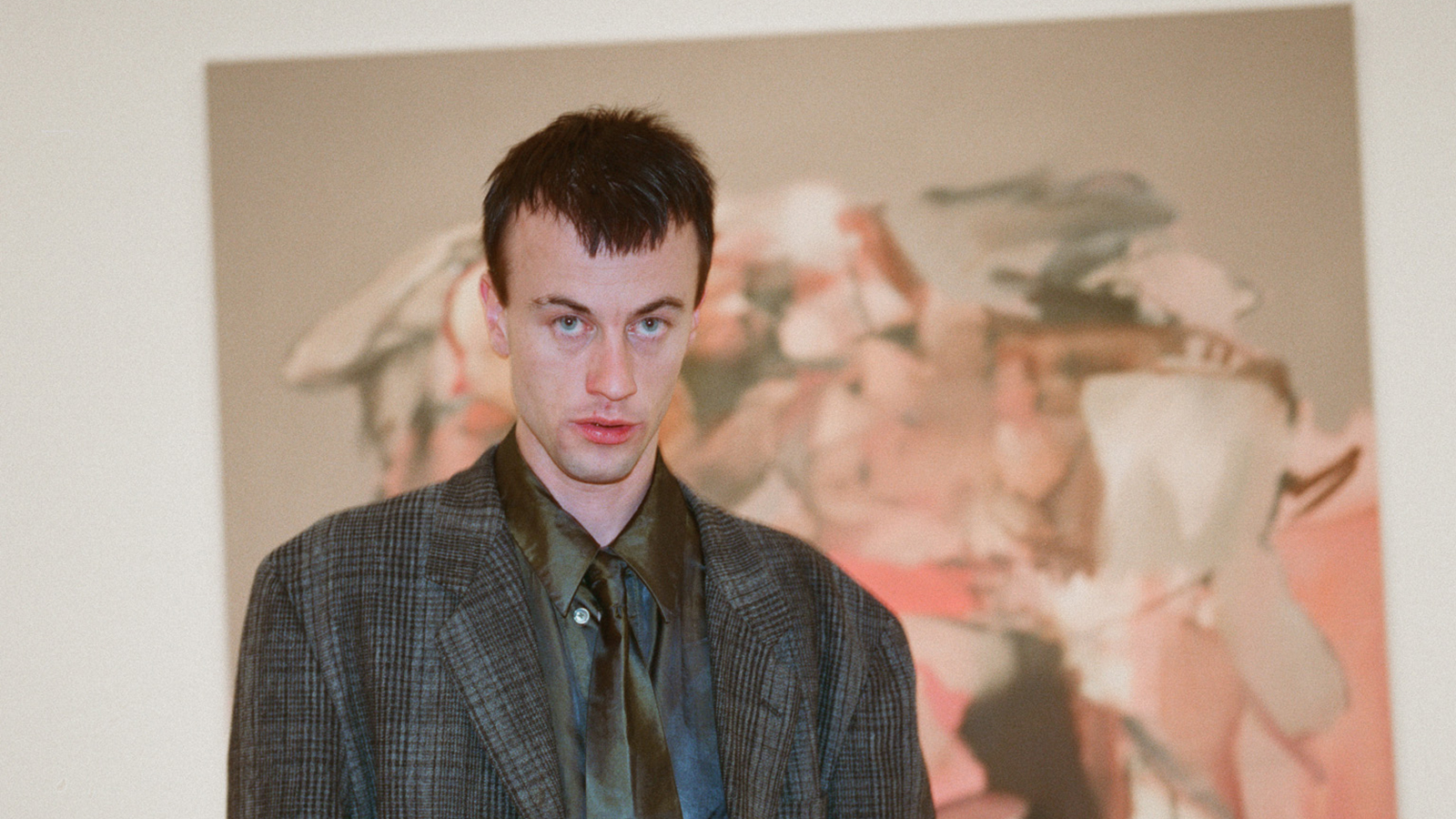 Inside the distorted world of artist George Rouy
Inside the distorted world of artist George RouyFrequently drawing comparisons with Francis Bacon, painter George Rouy is gaining peer points for his use of classic techniques to distort the human form
By Hannah Silver
-
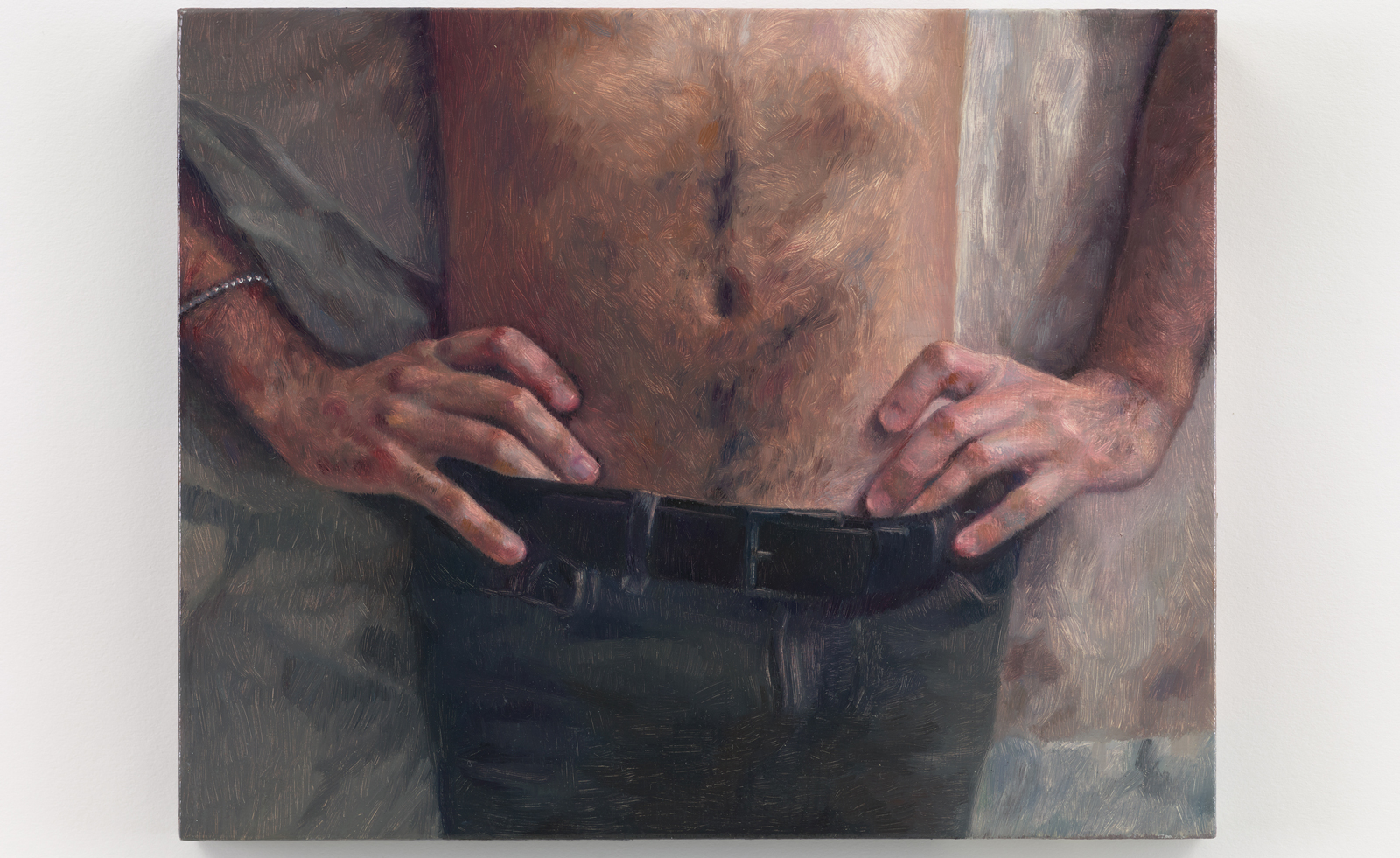 Love, melancholy and domesticity: Anna Calleja is a painter to watch
Love, melancholy and domesticity: Anna Calleja is a painter to watchAnna Calleja explores everyday themes in her exhibition, ‘One Fine Day in the Middle of the Night’, at Sim Smith, London
By Emily Steer
-
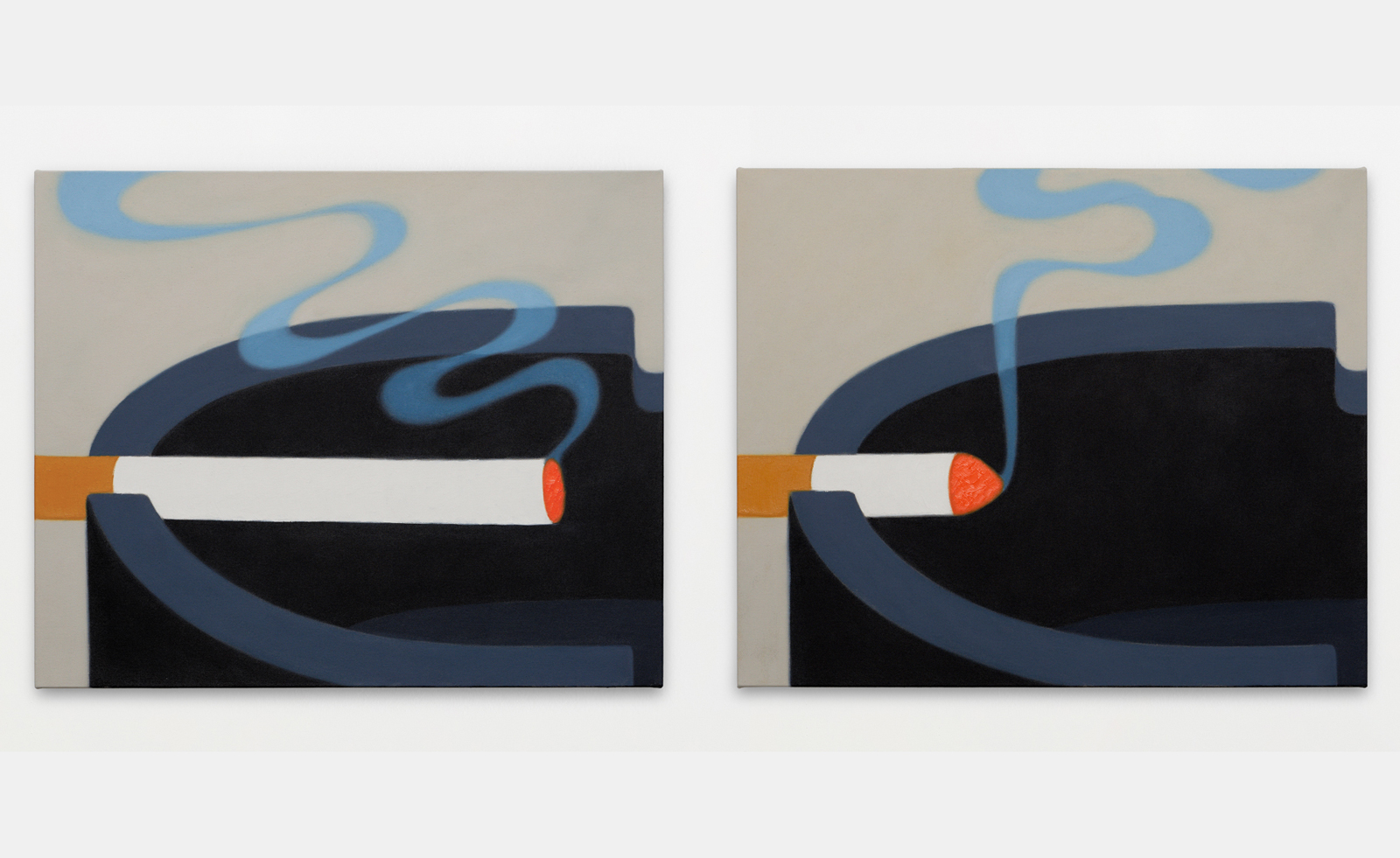 Henni Alftan’s paintings frame everyday moments in cinematic renditions
Henni Alftan’s paintings frame everyday moments in cinematic renditionsConcurrent exhibitions in New York and Shanghai celebrate the mesmerising mystery in Henni Alftan’s paintings
By Osman Can Yerebakan
-
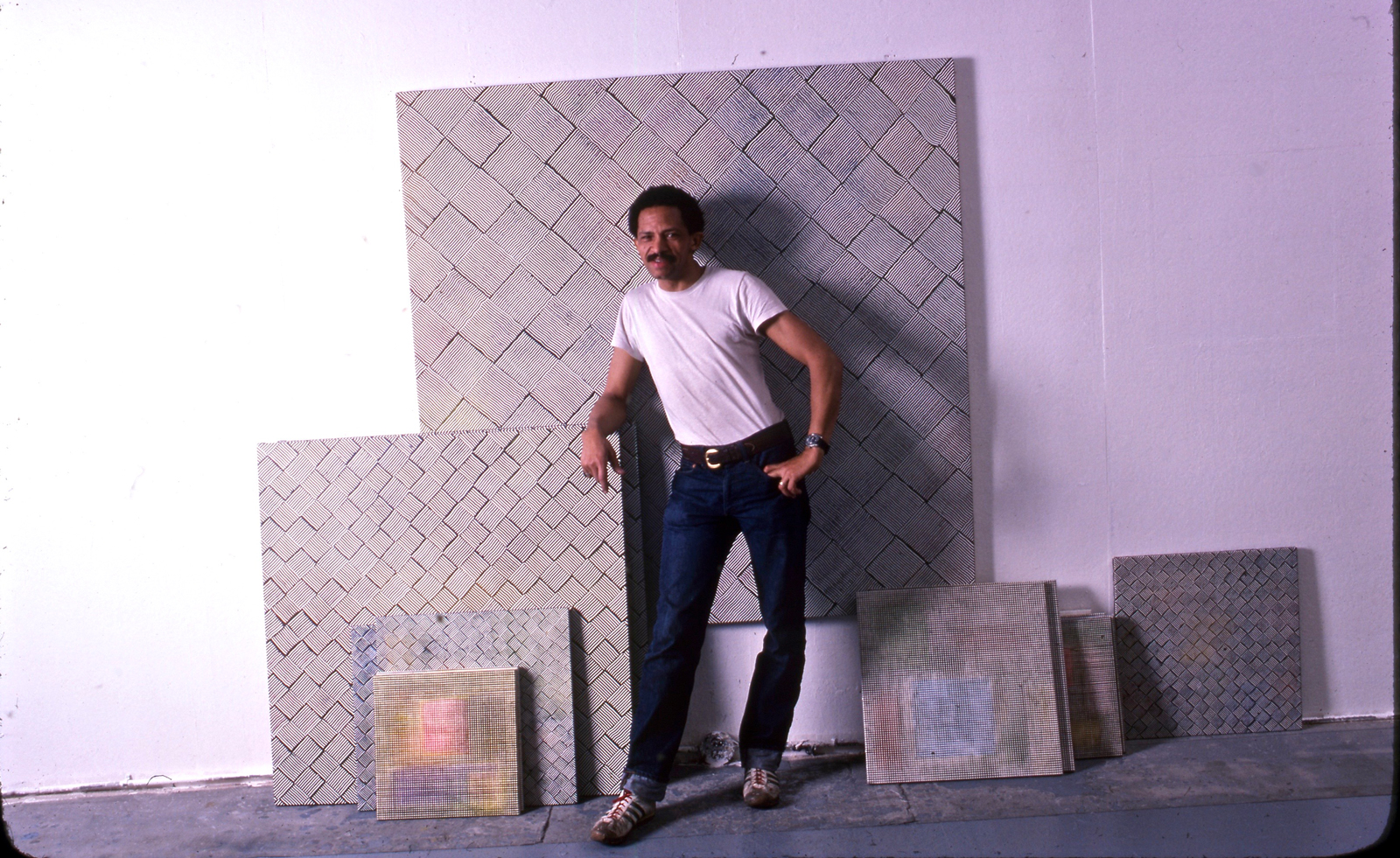 Inside Jack Whitten’s contribution to American contemporary art
Inside Jack Whitten’s contribution to American contemporary artAs Jack Whitten exhibition ‘Speedchaser’ opens at Hauser & Wirth, London, and before a major retrospective at MoMA opens next year, we explore the American artist's impact
By Finn Blythe
-
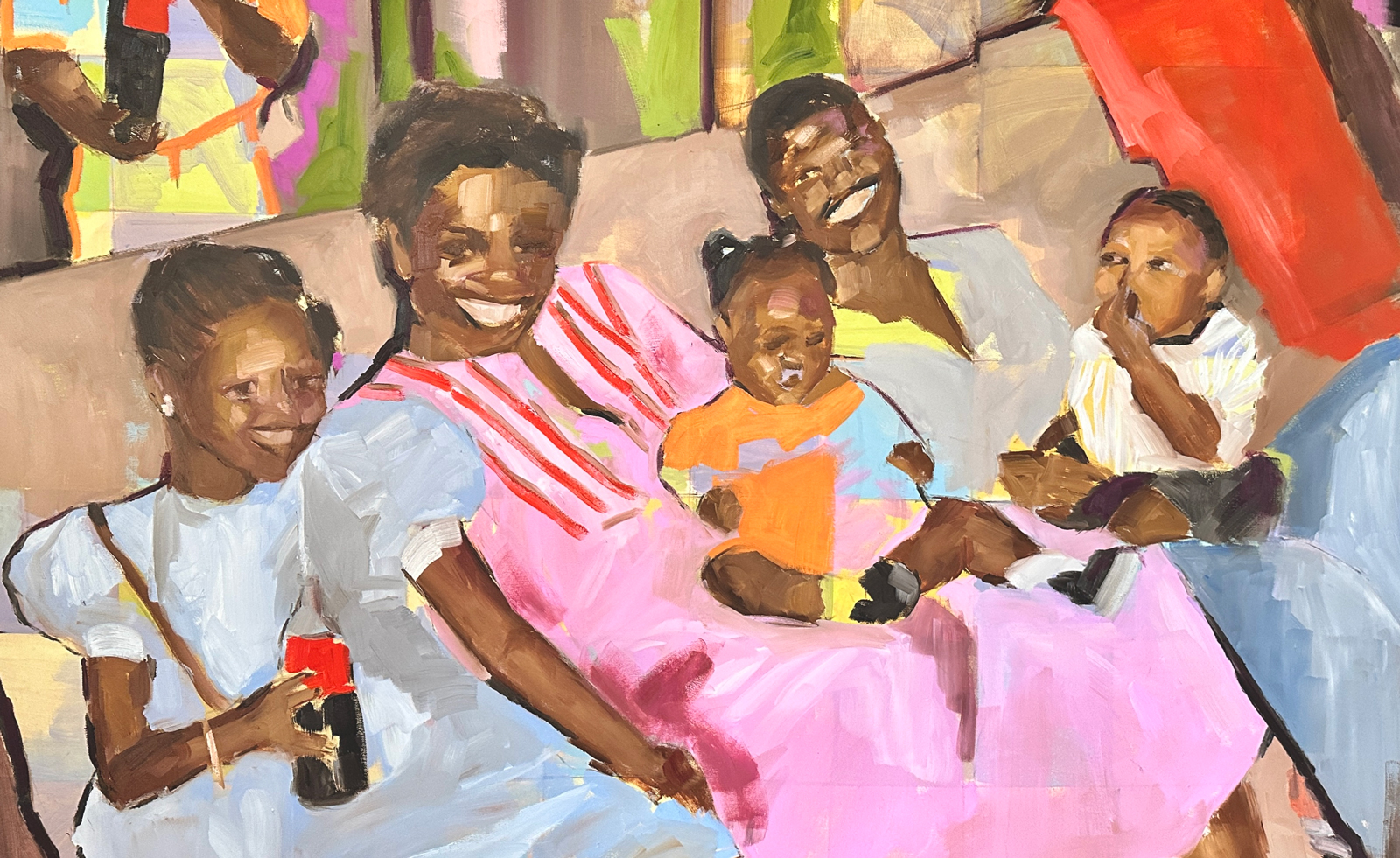 Don’t miss these artists at 1-54 Contemporary African Art Fair 2024
Don’t miss these artists at 1-54 Contemporary African Art Fair 2024As the 1-54 Contemporary African Art Fair returns to London (10-13 October 2024), here are the artists to see
By Gameli Hamelo
